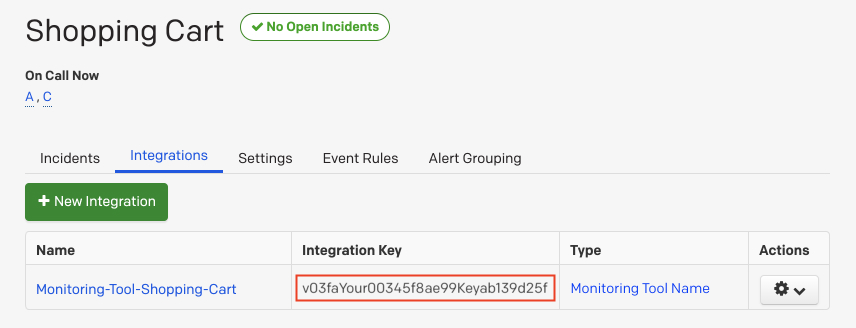Integrating Loadster with PagerDuty
PagerDuty sits at the heart of your technology ecosystem and helps you quickly pinpoint outages and other issues.
If you’re using Loadster for your site and API monitoring, connecting your PagerDuty account will ensure that your site monitors create and resolve incidents in PagerDuty whenever one of your monitors fails or recovers. From there, PagerDuty takes over to notify the right person on your team to fix it.
Benefits of Using PagerDuty With Loadster
Using PagerDuty with Loadster monitoring will help you to…
- Respond quickly to site outages, broken API endpoints, and any other issue that your Loadster monitors detect.
- Route the incident to the best person or team in your organization to diagnose and fix the issue.
- Collaborate with others on your team to resolve API outages and web application issues.
- Keep track of all kinds of incidents in one place.
- Track time to resolution and other metrics, so you can level up your team’s ability to respond quickly to problems.
How the PagerDuty Integration Works
Here’s the short version of how the Loadster PagerDuty integration works.
- When a Loadster monitor detects a problem with your site or application, it will create an incident in PagerDuty.
- PagerDuty will route the incident to the appropriate person or team to deal with the issue.
- In PagerDuty, you can reassign or escalate the incident.
- When your Loadster monitor detects a recovery, it will automatically resolve the incident in PagerDuty.
PagerDuty Integration Requirements
To enable the Loadster PagerDuty integration, you’ll need:
- A PagerDuty account
- A Loadster account with at least one monitor
Getting Help with the PagerDuty Integration
If you need help with this integration, please contact help@loadster.app. We’ll be happy to assist!
PagerDuty Integration Walkthrough
Setting it up is pretty easy! It just takes a few steps on each side.
In PagerDuty
First, on the PagerDuty side:
- From the Configuration menu, select Services.
- There are two ways to add an integration to a service:
- If you are adding your integration to an existing service: Click the name of the service you want to add the integration to. Then, select the Integrations tab and click the New Integration button.
- If you are creating a new service for your integration: Please read our documentation in section Configuring Services and Integrations and follow the steps outlined in the Create a New Service section, selecting Loadster as the Integration Type in step 4. Continue with the In Loadster section (below) once you have finished these steps.
- Enter an Integration Name in the format
monitoring-tool-service-name(e.g. Loadster-Monitors) and select Loadster from the Integration Type menu. - Click the Add Integration button to save your new integration. You will be redirected to the Integrations tab for your service.
- An Integration Key will be generated on this screen. Keep this key saved in a safe place, as it will be used when you configure the integration with Loadster in the next section.

In Loadster
Then, on the Loadster side:
- Go to the Integrations page of your dashboard.
- Click the Enable PagerDuty button in the PagerDuty section.
- Enter the Integration Key that you just created in PagerDuty.
- Save the integration settings. You’re all set!
Now, whenever one of your monitors detects a failure, it will automatically create an incident in PagerDuty. When the failing monitor recovers, it will mark the incident resolved.
How to Disable the PagerDuty Integration
To stop Loadster from creating incidents in PagerDuty, go to the Integrations page and click the remove button to disable the PagerDuty integration and discard the Integration Key.